53 start with H start with H
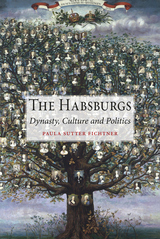
Tracing the origins of the house of Habsburg to the tenth century, Fichtner identifies the principal characters in the story and explores how they were able to hold together such a culturally diverse and multiethnic state for so many centuries. She takes account of the intertwining of culture, politics, and society, revealing the strategies that enabled the dynasty’s extraordinarily long life: its dazzling mix of cultural propaganda, public performances, and cunning political maneuvering. She points out the irony that one of the crowd-pleasing performances that had enabled the Habsburg success—visiting beds of the injured—led to Ferdinand’s death and the empire’s downfall. Breathing fresh life into the history of the Habsburg reign, this accessible and authoritative history charts one of the pivotal foundation stories of modern Europe.

Andrew F. Smith traces the trajectory of hamburger history, from its humble beginnings as a nineteenth-century street food sold by American vendors, from which it soon spread to the menus of diners and restaurants. The sandwich came into its own with the 1921 opening of the first hamburger chain, White Castle, and subsequent successful food chains such as McDonald’s and Wendy’s ensured the burger’s success in the United States and around the world. The hamburger irrevocably changed American life, Smith argues, as the sandwich propelled the rise of fast food over home-cooked meals in Americans’ eating habits. At the same time, burgers were making inroads in American culture, as well as becoming a rich symbol in paintings, television, and movies. Smith also discusses the darker nutritional, economic, and cultural conflicts raised by the hamburger, such as the “McDonaldization” of international cultures.
A juicy and richly illustrated read, Hamburger will stimulate the taste buds of carnivores the world over.




The Happiness Paradox examines how this modern obsession has evolved. Ziyad Marar shows how the state of mind we seek remains highly elusive, and much of the energy devoted to searching for happiness is wasted or even self-defeating. The author argues that happiness is a deceptively simple idea that will always be elusive because it is based on a paradox: the conflict between feeling good while simultaneously being good. It is the conflict, for example, between the desire to break rules, for adventure or self-expression, and the need to follow them to gain the approval of society; these tensions permeate what Freud called the two central parts of a happy life: love and work.
Drawing on a wide and varied range of sources – from psychology, philosophy, history, popular novels, television and films – this book will engage all those who are looking for meaning within their lives. It challenges the conventional search for happiness, while suggesting a bolder way to live with one of the central paradoxes of our time.
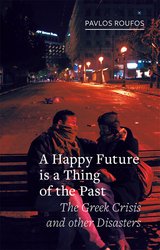
In this latest installment in Reaktion's Field Notes series, published in association with the Brooklyn Rail, Pavlos Roufos answers this key question in an insightful, critical analysis of the origins and management of the 2010 Greek economic crisis. Setting the crisis in its historical context, Roufos explores the creation of the Eurozone, its “glorious” years, and today’s political threats to its existence. By interweaving stories of individual people’s lived experiences and describing in detail the politicians, policies, personalities, and events at the heart of the collapse, he situates its development both in terms of the particularities of the Greek economy and society and the overall architecture of Europe’s monetary union. This broad examination also illuminates the social movements that emerged in Greece in response to the crisis, unpacking what both the crisis managers and many of their critics presented as a given: that a happy future is a thing of the past.

Once described as the “fastest, hairiest, most lascivious, and most melancholy” of mammals, the hare was also believed to never close its eyes, occasionally grow horns, and have the ability to change its sex. More than just a speedy, but lazy, character in popular children’s fables, the hare is remarkable for its actual behavior and the intriguing myths that have developed around it. Here, Simon Carnell examines how this animal has been described, symbolized, visually depicted, and sought for its fur, flesh, and exceptional speed.
Carnell tracks the hare from ancient Egypt, where a hieroglyph of a hare stood for the concept of existence itself, to Crucifixion scenes, Buddhist lore, and Algonquin creation myths, to the serial works of Joseph Beuys, and even to an art installation in a Dutch brothel. The hare shows up in both surprising and expected places—it was the principal subject of the first hunting treatise, it appears in the first signed and dated picture of a single animal, and it was credited in early medicine with the most curative properties of any animal.
Combining recent natural history with an extensive and richly illustrated focus on visual art, Hare is highly accessible and packed with details about a historically fascinating animal.

Hörber looks at the two central works that would alter the course of economic thought: Keynes’s The General Theory of Employment, Interest, and Money and Hayek’s The Road to Serfdom. Placing them within the context of the devastation that followed World War I, he explains how the historical conditions in which these books were written help us better understand how their lessons can illuminate the economic and political phenomena of our own era, such as the recent financial crisis, globalization, and European integration. He shows how Keynes’s emphasis on government regulation through monetary and fiscal policy and Hayek’s great cautions against the tyrannies that can so easily arise from central planning have led to competing schools of economic thought. Making accessible classic economic theory and employing a qualitative method of economics, he offers an articulated account of how history has led to our current economic environment.
With a broad perspective and incisive but clear examinations of important economic theories, this book places the two great economists of the twentieth-century within their historical context, illuminating how much we have learned—and can still learn—from them both.

H.D. (Hilda Doolittle, 1886–1961), best known for her imagist poetry, was one of the first writers of free verse in English. For over forty years, H.D. wrote poetry about forgotten ancient goddesses and autobiographical prose about her own traumas and desires. Dubbed the “perfect bi –” by Sigmund Freud, she was also a scholar of religion, mythology, and history, a translator of ancient Greek, and an avant-garde filmmaker. This new biography explores the fascinating life and work of this important but often overlooked modernist figure.

"Gilman tells an excellent tale."—Jewish Chronicle

Following the hedgehog as it spreads through Europe and Asia to the foot of Africa, Hugh Warwick describes its evolution, behavior, habitat, and diet, as well as its current endangered status. He also looks at the animal’s appeal, accessibility, and status as a pet in many countries, considering its appearance in advertising, films, children’s books, and games. Casting new light on the ancestors of Sonic and Mrs. Tiggy-Winkle, Hedgehog is a fascinating look at these prickly, admirable animals.


Charting Miller’s cultivation of his esoteric ideas from boyhood and adolescence to later in his career, Calonne examines how Miller remained deeply engaged with a variety of philosophies, from astrology and Gnosticism to Eastern thinkers. Calonne describes not only the effects this had on Miller’s work, but also to his complex and volatile life—his marriages and love affairs with Beatrice Wickens, June Mansfield, and Anaïs Nin; his years in Paris; and the journey to Greece that resulted in the travelogue The Colossus of Maroussi, the book Miller considered to be his greatest work. After discussing Miller’s final residences in Big Sur and the Pacific Palisades in California, Calonne considers the author’s involvement in the arts, love of painting and music, and friendships with a number of classical musicians. Miller, Calonne reveals, was a quirky, charismatic man of genius who continues to influence popular culture today.
Highlighting many areas of the author’s life that have previously been neglected, Henry Miller takes a fascinating revisionary approach to the work of one of American’s most controversial and iconic writers.

Salsa and guacamole wouldn’t be the same without cilantro, and you can’t make pizza without oregano or a mojito without mint. You can use peppermint to settle an upset stomach, ease arthritis pain with stinging nettle, and heal burns and wounds with aloe vera. And then there is cannabis—perhaps the most notorious and divisive herb of all. Despite the fact that herbs are often little more than weeds, cultures around the globe have found hundreds of uses for them, employing them in everything from ancient medicines to savory dishes. While much has been written on cooking and healing with herbs, little has been told about the history of the plants themselves and the incredible journeys they have made.

"...a fascinating account of the political idealism that informed urban planning for the first two-thirds of the twentieth-century...full of insights into how public space influences a sense of belonging and ownership."—The Guardian
"This is one of those books you stroke lovingly. Open it, and there is page after page of beautiful photographs...this book combines history, society, politics, environment and place in a well-written and emotive text. The strength of the book is the way it crosses these traditional boundaries and disciplines."—Town and Country Planning
"Drawing on architectural theories, philosophy, literature and even film-making, Worpole's book is wide-ranging and erudite and should be of interest to the layperson as well as to the urban planner. It is also elegantly written and complemented by a mixture of black and white and colour photographs to provide a visual emphasis to the points he raises."—N16 Magazine
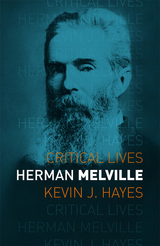
Hayes opens the book with an exploration of the revival of interest in Melville’s work thirty years after his death, which coincided with the aftermath of World War I and the rise of modernism. He goes on to examine the composition and reception of Melville’s works, including his first two books, Typee and Omoo, and the novels, short fiction, and poetry he wrote during the forty years after the publication of Moby-Dick. Incorporating a wealth of new information about Melville’s life and the times in which he lived, the book is a concise and engaging introduction to the life of a celebrated but often misunderstood writer.
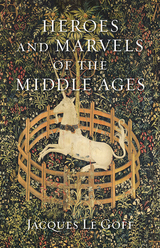

Painting a vivid picture of Bowie’s life in the Schöneberg area of the city, Rüther describes the artist’s friendships and collaborations with his roommate, Iggy Pop, as well as Brian Eno and Tony Visconti. Rüther illustrates Bowie’s return to painting, days cycling to the Die Brücke museum, and his exploration of the city’s nightlife, both the wild side and the gay scene. In West Berlin, Bowie also met singer and actress Romy Haag; came to know Hansa Studios, where he would record Low and Heroes; and even landed the part of a Prussian aristocrat in Just a Gigolo, starring alongside Marlene Dietrich. Eventually Rüther uses Bowie and his explorations of the cultural and historical undercurrents of West Berlin to examine the city itself: divided, caught in the Cold War, and how it began to redefine itself as a cultural metropolis, turning to the arts to start a new history.
Tying in with an exhibition at the Museum of Contemporary Art, Chicago, in September, 2014, Heroes tells the fascinating story of how the music of the future arose from the spirit of the past. It is an unforgettable look at one of the world’s most renowned musicians in one of its most inspiring cities.
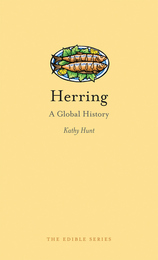
In Herring: A Global History, Kathy Hunt looks at the environmental, historical, political, and culinary background of this prolific and easily caught fish. Over the centuries, herring have sustained populations in times of war and hardship, and the fish’s rich flavor, delicate texture, and nutritious meat have made it a culinary favorite. Its ease of preparation—just grill, broil, fry, pickle, salt, or smoke and serve—have won it further acclaim. Engaging and informative, the book features fifteen mouth-watering recipes. It will appeal to food lovers, history buffs, and anyone who has ever enjoyed a British kipper, German Bismarck, Dutch matjes, or Jewish chopped-herring.
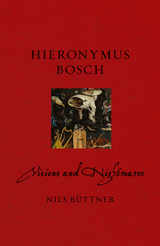
In his lifetime the early Netherlandish painter Hieronymus Bosch was famous for his phantasmagoric images, and today his name is synonymous with the infernal. The creator of expansive tableaus of fantastic and hellish scenes—where any devil not dancing is too busy eating human souls—he has been as equally misunderstood by history as his paintings have. In this book, Nils Büttner draws on a wealth of historical documents—not to mention Bosch’s paintings—to offer a fresh and insightful look at one of history’s most peculiar artists on the five-hundredth anniversary of his death.
Bosch’s paintings have elicited a number of responses over the centuries. Some have tried to explain them as alchemical symbolism, others as coded messages of a secret cult, and still others have tried to psychoanalyze them. Some have placed Bosch among the Adamites, others among the Cathars, and others among the Brethren of the Free Spirit, seeing in his paintings an occult life of free love, strange rituals, mysterious drugs, and witchcraft. As Büttner shows, Bosch was—if anything—a hardworking painter, commissioned by aristocrats and courtesans, as all painters of his time were. Analyzing his life and paintings against the backdrop of contemporary Dutch culture and society, Büttner offers one of the clearest biographical sketches to date alongside beautiful reproductions of some of Bosch’s most important work. The result is a smart but accessible introduction to a unique artist whose work transcends genre.

Urgent and unsparing, this book opens our eyes to America’s new heart of darkness. Driven by an ever-expanding socioeconomic crisis, America’s class structure is recomposing itself in new geographies of race, poverty, and production. The center has fallen. Riots ricochet from city to city led by no one in particular. Anarchists smash financial centers as a resurgent far right builds power in the countryside. Drawing on his direct experience of recent popular unrest, from the Occupy movement to the wave of riots and blockades that began in Ferguson, Missouri, Phil A. Neel provides a close-up view of this landscape in all its grim but captivating detail. Inaugurating the new Field Notes series, published in association with the Brooklyn Rail, Neel’s book tells the intimate story of a life lived within America’s hinterland.

As Williams recounts, while Hippos are only found in Africa today, they actually originated in Asia. They are closer relatives to whales than to pigs or horses, as previously thought. And until the last Ice Age, you could find them as far north as Europe. Today the common hippo is confined to south, central, and east Africa, and its mysterious cousin, the Pygmy Hippo, is only found in the forests of Sierra Leone. From these natural confines, Williams explores how hippos have lived in much wider regions of the human imagination, from the hippo deity Taweret in Ancient Egypt to Obaysch, the first living hippo exhibited in the London Zoo in the nineteenth century, whom Charles Dickens called our “illustrious stranger.” A fascinating history of the hippo in natural and human history, this book also serves as a call for conservation efforts to protect this vulnerable animal.

Following the 9/11 attacks and the anthrax letters that appeared in their wake, the threat posed by the widespread accessibility of chemical and biological weapons has continually been used to stir public fear and opinion by politicians and the media alike. In Chemical and Biological Weapons, Edward M. Spiers cuts through the scare tactics and hype to provide a thorough and even-handed examination of the weapons themselves—the various types and effects—and their evolution from World War I to the present.
Spiers describes the similarities and differences between the two types of weapons and how technological advancements have led to tactical innovations in their use over time. As well, he gives equal attention to the international response to the proliferation of chemical and biological weapons, analyzing global efforts aimed at restraining their use, such as deterrence and disarmament, and the effectiveness of these approaches in the twentieth century. Using Iraq as a case study, Spiers also investigates its deployment of chemical weapons in the Iran-Iraq War and the attempts by the international community to disarm Iraq through the United Nations Special Commission and the United States-led war in 2003.
A timely and balanced historical survey, Chemical and Biological Weapons will be of interest to readers studying the proliferation and use of chemical and biological warfare and the reactions of the international community throughout the last several decades.
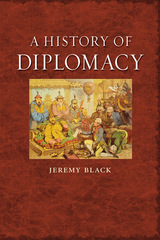
In A History of Diplomacy, historian Jeremy Black investigates how a form of courtly negotiation and information-gathering in the early modern period developed through increasing globalization into a world-shaping force in twenty-first-century politics. The monarchic systems of the sixteenth century gave way to the colonial development of European nations—which in turn were shaken by the revolutions of the eighteenth century—the rise and progression of multiple global interests led to the establishment of the modern-day international embassy system. In this detailed and engaging study of the ever-changing role of international relations, the aims, achievements, and failures of foreign diplomacy are presented along with their complete historical and cultural background.
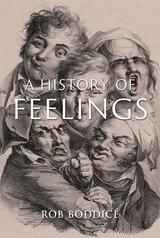
A History of Feelings is a compelling account of the unsaid—the gestural, affective, and experiential. Arguing that how we feel is the dynamic product of the existence of our minds and bodies in moments of time and space, Boddice uses a progressive approach that integrates biological, anthropological, and social and cultural factors, describing the transformation of emotional encounters and individual experiences across the globe. The work of one of the world’s leading scholars of the history of emotions, this epic exploration of our affective life will fascinate, enthrall, and move all of us interested in our own well-being—anyone with feeling.

This book illuminates the glittering history of fireworks, from their mysterious beginnings to the dazzling big-budget displays of today. It describes how they enthralled the world’s royal courts and became a sensation across the British Empire. There are stories of innovations like “living fireworks,” fiercely fought international competitions, and the technology behind modern showpieces viewed by millions. Practitioners say fireworks are an art, and they have inspired artists from Shakespeare, Handel, Dickens, and Whistler to Katy Perry. But John Withington also covers fireworks’ practical uses—rescues at sea, attempts to control the weather—while not ignoring their dangers, accidents, or efforts to make them safer.


"[a] delightful and unexpectedly accessible book ... a virtuoso tour of the linguistic world."—The Economist
"... few who read this remarkable study will regard language in quite the same way again."—The Good Book Guide


With the Middle Ages in Europe and the Middle East, innovative re-inventions of reading emerged – silent and liturgical reading; the custom of lectors; reading’s focus in general education – whereupon printing transformed society’s entire attitude to reading. Fischer charts the explosion of the book trade in this era, its increased audience and radically changed subject-matter; describes the emergence of broadsheets, newspapers and public readings; and traces the effect of new font designs on general legibility.
Fischer discusses society’s dedication to public literacy in the sweeping educational reforms of the eighteenth and nineteenth centuries, and notes the appearance of free libraries, gender differences in reading matter, public advertising and the "forbidden" lists of Church, State and the unemancipated. Finally, he assesses the future, in which it is likely that read communication will soon exceed oral communication through the use of the personal computer and the internet, and looks at "visual language" and modern theories of how reading is processed in the human brain. Asking how the New Reader can reshape reading’s future, he suggests a radical new definition of what reading could be.
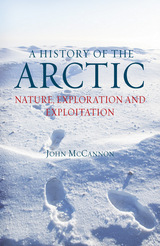

A provocative examination of the deepest vaults of our souls and the efforts of the many lonely hunters who have tried to unlock its secrets, A History of Heart upends the clichés to reveal a symbol of our fundamental humanity whose beats can be felt in every aspect of our lives.
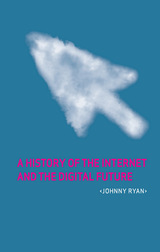


Commencing with the first stages of information storage, Fischer focuses on the emergence of complete writing systems in Mesopotamia in the fourth millennium BC. He documents the rise of Phoenician and its effect on the Greek alphabet, generating the many alphabetic scripts of the West. Chinese, Vietnamese, Korean and Japanese writing systems are dealt with in depth, as is writing in pre-Columbian America. Also explored are Western Europe's medieval manuscripts and the history of printing, leading to the innovations in technology and spelling rules of the 19th and 20th centuries.
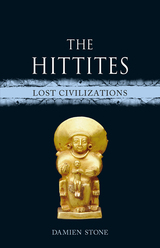
Famed for their warriors, the Hittites flourished in the region of modern Turkey from the seventeenth to thirteenth centuries BC. In this book, archaeologist Damien Stone explores the rich history of the Hittite civilization beyond their skill in battle, from religious reverence for the sun and storms to eclectic rock carvings which survive to this day. Stone describes the colorful succession of Hittite rulers, complete with assassinations, intrigue, and an evil stepmother, but he also parses the development of the Hittite language and considers the Hittites’ legacy in religion, art, and culture today. In short, The Hittites is a wide-ranging, accessible introduction to this vibrant ancient culture.

Hollywood cinema and Los Angeles cannot be understood apart. Hollywood Cinema and the Real Los Angeles traces the interaction of the real city, its movie business, and filmed image, focusing on the crucial period from the construction of the first studios in the 1910s to the decline of the studio system fifty years later.

From conspiracy dramas such as The Manchurian Candidate to satires like Wag the Dog, Hollywood Goes to Washington argues that political films in American cinema have long reflected the issues and tensions roiling within American society. Coyne elucidates the mythology, iconography, and ideology embedded in both classic and lesser-known films—including Gabriel Over the White House, Silver City, Advise and Consent, and The Siege—and examines the cinematic portrayals of presidents in the White House, the everyman American citizen, and the nebulous enemies who threaten American democracy. The author provocatively contends that whether addressing the threat of domestic fascism in Citizen Kane or the disillusionment of Vietnam and paranoia of the post-Watergate era in Executive Action, the American political film stands as an important cultural bellwether and democratic force—one that is more vital than ever in the face of decreasing civil liberties in the present-day United States.
Compelling and wholly original, Hollywood Goes to Washington exposes the political power of the silver screen and its ramifications for contemporary American culture.
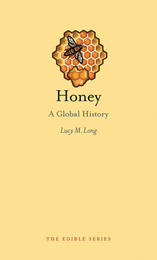
Long points to a crucial fact about honey: it can be enjoyed with very little human processing, which makes it one of the most natural foods we consume. Its nutritional qualities and flavors dramatically reflect the surroundings in which it is produced, and those who produce it—bees—are some of the most important insects in the world, the chief pollinators of wild plants and domesticated crops alike. Showing how honey has figured in politics, religion, economics, and popular culture, Long also directly explores its tastiest use—in our food and drink—offering a history of its culinary place in the world, one sweetened with an assortment of delicious recipes. Lively and engaged, her account will give even the saltiest of us an insatiable sweet tooth.
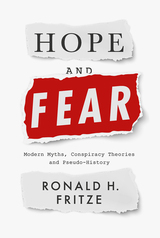
Is a secret and corrupt Illuminati conspiring to control world affairs and bring about a New World Order? Was Donald Trump a victim of massive voter fraud? Is Elizabeth II a shapeshifting reptilian alien? Who is doing all this plotting?
In Hope and Fear, Ronald H. Fritze explores the fringe ideas and conspiracy theories people have turned to in order to make sense of the world around them, from myths about the Knights Templar and the Ten Lost Tribes of Israel, to Nazis and the occult, the Protocols of Zion and UFOs. As Fritze reveals, when conspiracy theories, myths, and pseudo-history dominate a society’s thinking, facts, reality, and truth fall by the wayside.

From Pegasus to Black Beauty, horses have held a unique place in human society and imagination. Elaine Walker tackles the long and multifaceted history of a creature valued for both beauty and usefulness.
Spanning the world from the wild steppes of Mongolia to the American plains, Horse chronicles the rich and complex natural history of the animal, from wild feral horses to the domesticated species that once played a central role in daily life as a means of transportation, an instrument of war, and a source of labour. Elaine Walker charts how the long-standing connection between people and horses is reflected in cultures around the world and the implications for both human and animal of such close interaction. She also traces the centrality of the horse in art, entertainment and literature, from the rich global traditions of horse-racing and equestrianism to literary classics such as Follyfoot. Ultimately, Walker contends, the continuing role of the horse in the modern world reveals telling changes in human society.
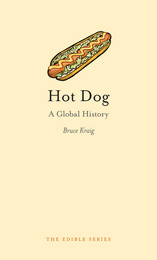
Kraig discusses the many brands, including Hebrew National, Pearl, Sabrett, and Vienna Beef, and the regional variations that go along with them—like kosher-style New York dogs loaded with mustard and sauerkraut, New England dogs with Boston Baked Beans, and fully-loaded Chicago style hotdogs, complete with mustard, onion, relish, sport peppers, a dill pickle spear, a dash of celery salt, and tomato slices (but never, ever ketchup). Hot Dog covers the other international sausages, like bologna and bockwurst, as well, and explores some of the apocryphal tales of the hotdog in history—like the origin of its name and whether Queen Elizabeth II was truly served hotdogs on a visit to the White House.
Packed with tasty facts and recipes, Hot Dog reveals the rich history and passionate opinions about this seemingly ordinary food.
As Tantner shows, house numbers started their lives in a gray area between the military, tax authorities, and early police forces. With an engaging style, he moves from the introduction of house numbers in European towns in the eighteenth century, through the spread of the numbering system in the nineteenth century, and on into its global adoption today. He uncovers a contentious past, telling the stories of the many people who have resisted having their homes so systematically ordered. Along the way, his visual journey showcases a surprising diversity of house number displays, visiting historic addresses from the London house on Strand-on-the-Green that is numbered “Nought” to 1819 Ruston, Louisiana.
The result is a story that will forever change the way you see a city, one that elevates the seemingly insignificant house number to an important place in the history of urban planning.

Three rulers from the House of Orange-Nassau reigned over the Netherlands from 1813 to 1890: King William I from 1813 to 1840, King William II from 1840 to 1849, and King William III from 1849 to 1890. Theirs is an epic tale of joy and tragedy, progress and catastrophe, disappointment and glory—all set against the backdrop of a Europe plagued by war and revolution.
The House of Orange in Revolution and War relates one and a half centuries of House of Orange history in a gripping narrative, leading the reader from the last stadholders of the Dutch Republic to the modern monarchy of the early twentieth century, from the French Revolution and the Napoleonic wars to World War I and the European Revolutions that came after it.

Our penchant for keeping houseplants is an ancient practice dating back to the Pharaohs. House Plants explores the stories behind the plants we bring home and how they were transformed from wild plants into members of our households.
A billion-dollar global industry, house plants provide interaction with nature and contribute to our health, happiness, and well-being. They also support their own miniature ecosystems and are part of the home biome.
Featuring many superb illustrations, House Plants explores both their botanical history and cultural impact, from song (Gracie Fields’s “Biggest Aspidistra in the World”), literature (Orwell’s Keep the Aspidistra Flying), and cinema (Audrey II in Little Shop of Horrors) to fashion, technology, contemporary design, and painting.

Country houses are quintessentially English, not only architecturally but also in that they embody national values of continuity and insularity. The English country house, however, has more often been the site of violent disruption than continuous peace. So how is it that the country how came to represent an uncomplicated, nostalgic vision of English history? This book explores the evolution of the country house, beginning with the Reformation and Civil War, and shows how the political events of the eighteenth century, which culminated in the reaction against the French Revolution, led to country houses being recast as symbols of England’s political stability.

Sixteenth-century Spain was small, poor, disunited, and sparsely populated. Yet the Spaniards and their allies built the largest empire the world had ever seen. How did they achieve this? Felipe Fernández-Armesto and Manuel Lucena Giraldo argue that Spain’s engineers were critical to this venture. The Spanish invested in infrastructure to the advantage of local power brokers, enhancing the abilities of incumbent elites to grow wealthy on trade, and widening the arc of Spanish influence. Bringing to life stories of engineers, prospectors, soldiers, and priests, the authors paint a vivid portrait of Spanish America in the age of conquest. This is a dazzling new history of the Spanish Empire, and a new understanding of empire itself, as a venture marked as much by collaboration as oppression.
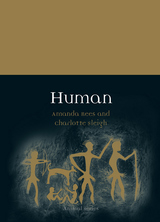
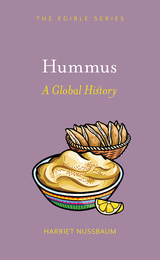
This is a global history of hummus bi-tahina, the delicious combination of chickpeas, tahini, lemon, and garlic that we know and love as hummus. The story begins in the medieval kitchens of the Near and Middle East and culminates with hummus’s rise in popularity in the Western world at the end of the twentieth century. This book also addresses the international controversy over ownership of the dish and illustrates the extent to which hummus has been embraced by Western food culture today. Though other Mediterranean dishes have become popular in the West, none can be compared to hummus, which can be found in any supermarket and in vast numbers of eating establishments. Hummus has become a global phenomenon and our very favorite dip.
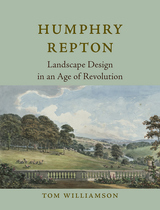

Hyenas are almost universally regarded as nasty, scheming charlatans that skulk in the back alleyways of the animal kingdom. They have been scorned for centuries as little more than scavenging carrion-eaters, vandals, and thieves. Here to restore the Hyena’s reputation is Mikita Brottman, who offers an alternate view of these mistreated and misunderstood creatures and proves that they are complex, intelligent, and highly sociable animals.

READERS
Browse our collection.
PUBLISHERS
See BiblioVault's publisher services.
STUDENT SERVICES
Files for college accessibility offices.
UChicago Accessibility Resources
home | accessibility | search | about | contact us
BiblioVault ® 2001 - 2024
The University of Chicago Press









